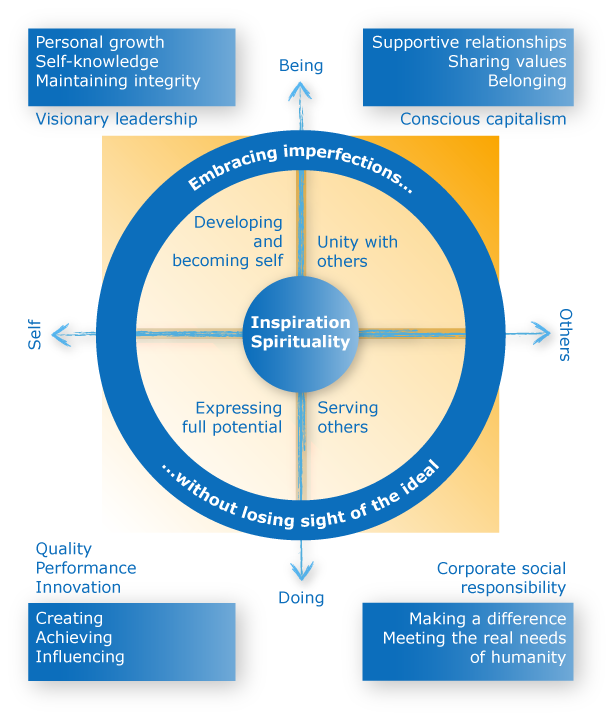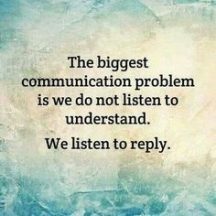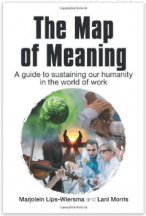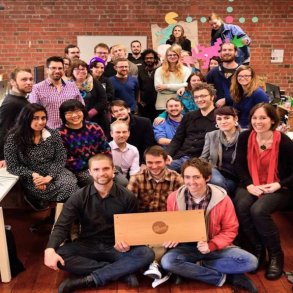By Anna Betz for Enlivening Edge Magazine
Have you ever asked yourself “What is the real meaning of what I am doing?” If so, as you might guess, you’re not alone.
How would you describe finding meaning in the work you do? Would you say that work is most meaningful when it contributes to developing your thoughts and sense of who you are? Would you say that it’s more meaningful when it helps you discover and express your full potential? How about when you feel connected with others? Does doing great service give you the most meaning? How about all of the above?
If you answered “yes” to any or all of the four ways in which people find meaning in their work, then you are using your mental model of meaning. Whether we work to live or live to do our life’s work, our inner maps of making meaning are shaping our experience of our work and life.

The Map of Meaning (MoM) is a simple concept with powerful implications. Each of the four quadrants guides us to many opportunities to find meaning, but the map’s real power lies in helping to find a balance between doing and being, becoming and belonging. (An example of one of their many visual representations is on the left. Their intersection forms four quadrants: a) developing the inner self, b) unity with others, c) expressing full potential, and d) service to others.
Used wisely, the MoM is well suited for working positively with tensions in life and at work, with individuals and with organisations. It can also be an eye-opener for employers lamenting about rampant employee disengagement. “As meaning gets lost… motivation has to be invented. Through ‘motivation’ the lack of meaning of work gets substituted or converted into the question how does one get people to act and produce under conditions in which they normally would not be ‘motivated’ to work?” (1)
When workers don’t feel seen, heard and appreciated by their company, their heart is not in their work. They perform their tasks as a duty towards their employer in order to meet minimum requirements as set out in their contract so that they get paid. They are unlikely to feel a sense of responsibility beyond meeting targets set for them by someone else. Basically they work to earn money to survive without being able to bring their creativity to their work. Work becomes a chore without much meaning, and life happens outside of work.
Under stress workers typically make one of two choices:
- Silently performing their duties to meet expectations set by the company and dealing with their frustrations by themselves as individuals so that they get paid. This harms the person and often leads to sickness and absence.
- They find co-workers in the same or similar situation and download their frustrations, project them outward and rebel against the system that keeps them restrained and controlled. This typically leads to workers forming alliances to share their frustrations. It often harms the company, the workers’ own self-esteem and the team culture.
Neither of these situations enables the worker to become an authentic person and feel whole as a human being. It impacts naturally on their performance and wellbeing. We are all born with a desire for meaning. When life and work lack meaning we feel bored, frustrated, and disempowered.
The “Map of Meaning” practices help restore wholeness. They help people to create/discover meaning and access the innate potential in a very organic and sustainable way. The MoM enables us to meet everyone where they are in their life and work, and to help them find out how the different aspects of themselves might or might not connect in a meaningful and empowering way.
The Map of Meaning approach tells us that becoming a more authentic person is an inside-out and bottom-up approach which can be enabled by deep skillful listening to the potential present in everyone without exception. We are born with it. Making meaning comes from seeing what is there and what is going on, not trying to judge it as good or bad, right or wrong, not trying to give rational explanations, or think of what should be now or in the future.

How often do we stop and listen to the stillness within ourselves to see what is really going on? How often do we compromise our inner integrity when we don’t listen to what really matters to us and then end up doing things we don’t like, thus ending up not liking who we are becoming.
Most of us have experienced destructive patterns that we have allowed to colonise our thinking from an early age. We grow up with our mental maps and forget that we can change them. I describe my own experience with using the map in my Huffington Post blog here.
The message of Map of Meaning is, please see what is going on. It helps people notice imbalance, gives language to meaning and to what matters, and helps restore people’s dignity. In the words of one of its founders: “We may not be able to answer the big question of what is the meaning of life but we can answer, what is the meaning of my life today. What was meaningful in my work last week?”
Using the Map of Meaning in organisations, we explore what makes work meaningful to different employees, who create their own maps and learn a range of ways to use it. We are also looking at organizational dynamics and tensions, and exploring their cultural and structural roots, using the MoM. There are many practices we can draw on including constellation, nature walks, artistic expressions, peer-to-peer coaching, mindfulness practice and other practices.
Participants work alone, in pairs, triads, small and larger groups to discover ways of responding to tensions which then can shift into alignment with the company’s evolutionary purpose. They can feel seen, heard and appreciated in a supportive environment. They can experience themselves in new ways, to feel more connected with their purpose and the purpose of the organisation they are working inside.
In self-managing organisations, the MoM can also support performance management in a way that is connected to what is meaningful to workers and the company. When workers feel themselves to be an important part of the process, they are also more likely to be flexible and adjust more easily to stressful situations. Under stress, the automatic reaction is to resist change. Once being allowed to talk about challenges and feel they are trusted to find solutions that work, people can become creative. They feel they belong.
Because the Map of Meaning captures intrinsic motivations, it has relevance in many areas of life. Workshops are tailored to meet specific needs, e.g. ‘Meaningful Performance Management’, ‘Coaching with the Map of Meaning’, or ‘Leading between Inspiration and Reality’.
These workshops help in learning how to engage employees in a genuine dialogue about how daily tasks can be a natural expression of what truly matters, beyond profits and growth.
Reference
(1) Sievers, B. (1994) Work, Death, and Life Itself: Essays on Management and Organization
Useful links:
The Map of Meaning at Saybrook University
What does wholeness mean in the context of Teal organising?
 Anna Betz is a facilitator of workplace communities of practice, a coach, mindfulness teacher. She is passionate about awakening the potential which is present but dormant within individuals and collective systems. She is Sector Editor for Health for Enlivening Edge Magazine—News from Next-Stage Organizations, and co-director of the School of Commoning which delivers workshops, seminars and educational projects. She is also an experienced mental health professional with managerial responsibilities in the National Health Services, and has successfully initiated and facilitated a number of collaborative and co-creative projects with doctors and other health professionals in primary and secondary care. Her deep understanding in how living systems function enables her to guide self-managing organisations to wholeness and an embodied connection with their evolutionary purpose.
Anna Betz is a facilitator of workplace communities of practice, a coach, mindfulness teacher. She is passionate about awakening the potential which is present but dormant within individuals and collective systems. She is Sector Editor for Health for Enlivening Edge Magazine—News from Next-Stage Organizations, and co-director of the School of Commoning which delivers workshops, seminars and educational projects. She is also an experienced mental health professional with managerial responsibilities in the National Health Services, and has successfully initiated and facilitated a number of collaborative and co-creative projects with doctors and other health professionals in primary and secondary care. Her deep understanding in how living systems function enables her to guide self-managing organisations to wholeness and an embodied connection with their evolutionary purpose.





Thanks, Anna. I’m very interested in knowing if and how you have applied MoM, and what you discovered.
Thank you for asking Edith. My experience comes from using it for myself and discovering what is working well and not working so well in my life and work. When we worked in pairs with some powerful questions in each quadrant, I connected with deeper parts of myself that either move me to do things or prevent me being true to my values.. Example questions in the UL quadrant: What stops me from doing the right thing? . How easy or difficult do I find it to raise ethical issues? It helped enquire into the quality of my courage that initiates my becoming. Then in the right UR quadrant: What enables, supports and strengthens and enriches unity to happen? What frustrates and destroys unity? When do I isolate or separate myself from whats happening around around me and live in my own small world? Inspired by my own beliefs, how could I strengthen unity at work?
I use it in my team at work for team building. My team mates are very appreciative for having permission to connect to their inner beliefs, learn to ask questions which connect them with issues that really matter to them and move them into action. For example, what stops them from putting forward good ideas? They have been quite surprised to hear each others wishes, fears, dreams, aspirations … It brings up heartfelt stories that bring us into closer connection with each other. Using the map provides the opportunity to uncover the split between beliefs and behaviour and gives us a language to speak about it without judgement. It helps my colleagues to feel they can take responsibility by taking action to support their own meaningfulness. What we are learning about each other that we are all longing for a meaningful life and work is part of that. It is a very human longing that when supported and trusted can unleash new energy and help us to support each other in an empowering way.
I just listened to the talk by Lani Morris at he 2018 Meaning Conference in Brighton about her work with the Map of Meaning and felt very inspired.
Her talk is full of practical examples of how this framework is helping people and organisations to talk about and engage with meaning, become aware of some of unconscious assumptions and as humans reclaim our constructive nature as people who are longing for meaning.
Why not take the opportunity to check it out here: https://brighton.meaningconference.co.uk/videos/lani-morris.php